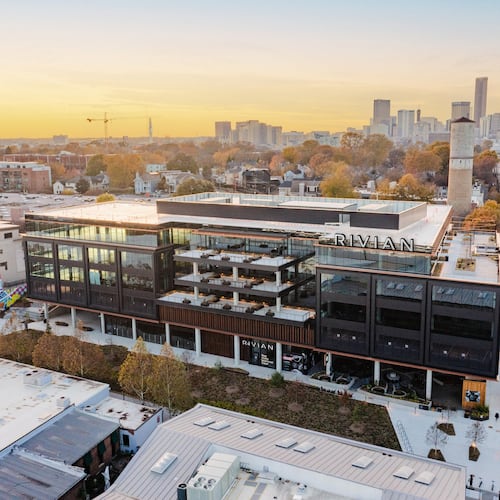A high-rise downtown office tower — long considered a money pit for the state — is now owned by the city of Atlanta, which plans to turn portions of the building into several hundred new housing units.
Mayor Andre Dickens announced Thursday afternoon that Invest Atlanta, the city’s economic development agency, closed on a deal to purchase the 2 Peachtree Street building for $39 million from the state of Georgia. The city plans to convert parts of the 41-story structure into mixed-income apartments to add some vibrancy near the MARTA Five Points station.
The building will become the tallest residential building in Atlanta and is part of a goal by Dickens to increase the number of people living downtown.
“We need to help residents and others understand that it’s not just a place for tourists and office workers,” he said Tuesday at a Central Atlanta Progress (CAP) annual lunch. “This is place that we’re going to have lots of people living, and I have a vision for a revitalized downtown.”
For years, the state has been trying to sell 2 Peachtree, which has acted as a workplace for thousands of state employees since the 1990s. It was built in the 1960s as the headquarters of the former First National Bank of Atlanta. Last year, state House leaders put $45 million into the midyear budget to start moving state employees out of the building. House Appropriations Chairman Terry England, R-Auburn, said it would cost more to properly renovate the building than it is worth.
Invest Atlanta used money in the Eastside Tax Allocation District to partially fund the purchase. The agency plans to solicit responses from a request for proposals over the summer, aiming to select a development partner by the end of the year and begin construction in 2024.
The city envisions the transformed 1 million-square-foot tower including housing options at a variety of rental price points, targeting students, blue-collar workers and residents who can afford market-rate units. The split between market-rate and discount units has not been determined.
In addition, the tower’s lower levels are expected to consist of retail, restaurants and office space, leveraging the building’s close proximity to downtown and the Five Points station.
Credit: Natrice Miller / Natrice.Miller@ajc.com
Credit: Natrice Miller / Natrice.Miller@ajc.com
“The redevelopment of 2 Peachtree will serve as an anchor for the ongoing revitalization of Downtown Atlanta — creating long-term affordable housing and mixed-use space accessible to the heart of Atlanta’s transit system,” Dickens said in a Thursday news release.
In the release, Gov. Brian Kemp said he’s “grateful that this historic building will continue to have an important purpose.”
The 2 Peachtree building project joins multiple other affordable housing projects aimed at increasing living options in the city’s center.
Atlanta is also redeveloping 104 Trinity Street into a 228-unit community on vacant city-owned land, and the city is working to build new affordable housing at 143 Alabama Street, where the city wants to preserve the former Atlanta Constitution Building. Last week, Invest Atlanta issued a call for developers to reimagine land near MARTA’s Garnett Station, which is also expected to include housing.
Downtown’s largest revitalization dream, CIM Group’s $5 billion Centennial Yards, would transform the parking lots and railroad lines known as The Gulch into mix of housing, office buildings, retail and hotels.
Dickens said one of the first steps to breathing new life into downtown is getting people to live in the area.
Dickens set a goal to build or preserve 20,000 affordable housing units by 2030. The city says 5,800 units are finished or in construction so far.
“None of us wants a downtown that shuts down at 5 (p.m.) everyday,” he said at the CAP lunch.
About the Author
Keep Reading
The Latest
Featured


